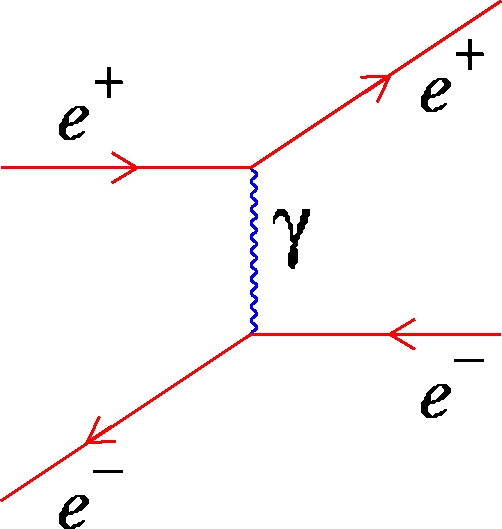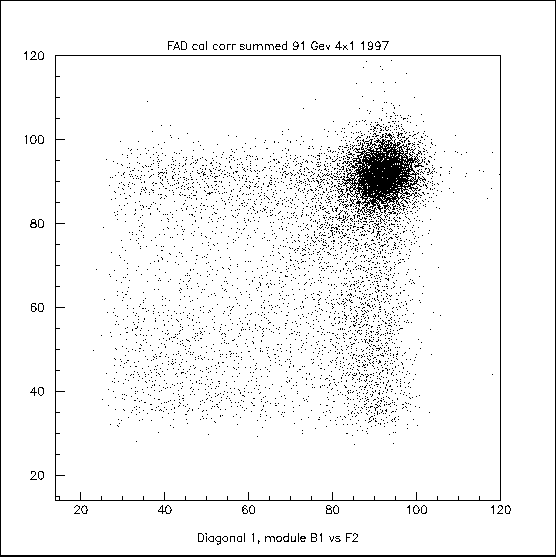| Luminosity determination |
|
The interaction rate depends on the energy, the density and the geometry of the beam. The physical quantity that one wants to measure is the probability that the interaction will take place, the cross section. The cross section is proportional to the reaction rate, the proportionality constantis called luminosity. In principle is it possible to calculate the luminosity knowing the beam specific parameters. Higher density and smaller dimension of the beam will give a higher luminosity. In practice are these parameters often not known with a good enough precision. This is the case for the LEP experiments. From the definition, (cross section) = (luminosity) times (measured reaction rate), is another method available: by knowing the cross section of a process and by measuring the reaction rate, the luminosity can be obtained. The selected process measured has to be a well known process, both theoretically and experimentally. It must also have a large cross section, i.e. large interaction rate, in comparison with other measured processes. These requirements will ensure small errors in the luminosity determination.
In VSAT is the reaction rate measured within a small angular region, and for incident particles above a low threshold. Not all of the incident particles is the product from the bhabha scattering. There are as well background processes, e.g. inside the beam pipe is there not an absolute vacuum and the beam particles may scatter from the remaining atoms. These scattered beam particles have normally lower energy then beam energy, and are subtracted from the bhabha scattering.
The accuracy obtained in the luminosity calculation with VSAT is a few permille. VSAT is used to obtain the relative luminosities at different beam energies, the absolute value of the luminosity is determined with a different detector, covering larger scattering angles, and hence have smaller interaction rate. Ulf Mjörnmark, october 1997 |
|
|
| ©1997 Particle Physics, Lund University | ||
 A process fulfilling these requirements in LEP is the elastic scattering of electrons
on positrons, the bhabha process.
In the elastic scattering process do the outgoing particles have the same
energy as the incoming, it is the direction that change.
The bhabha process is to a first approximation described by the
exchange of a photon, illustrated by the diagram to the right. The cross section
increase rapidly with small scattering angles, making small angle bhabha scattering
a well suited process for luminosity measurements. This is the reason for placing
the luminosity detectors, e.g. VSAT in DELPHI, close to the beam far away from the
interaction point.
A process fulfilling these requirements in LEP is the elastic scattering of electrons
on positrons, the bhabha process.
In the elastic scattering process do the outgoing particles have the same
energy as the incoming, it is the direction that change.
The bhabha process is to a first approximation described by the
exchange of a photon, illustrated by the diagram to the right. The cross section
increase rapidly with small scattering angles, making small angle bhabha scattering
a well suited process for luminosity measurements. This is the reason for placing
the luminosity detectors, e.g. VSAT in DELPHI, close to the beam far away from the
interaction point.
